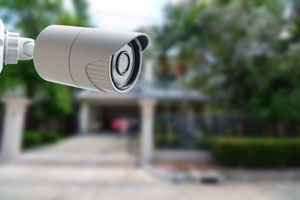A South Carolina judge has ruled that the prosecution will be allowed to call an expert witness to testify in the trial of a husband and wife who are charged with kidnapping. The disappearance of Heather Elvis made national headlines. Coverage included a feature on the Missing in America series on Dateline NBC. News commentary sparked a social media frenzy that may have fueled ill-considered murder charges.
Murder Charges Filed
Heather Elvis disappeared in 2013. The 20-year-old woman went on a date on December 17. She returned to her apartment at about 2:00 a.m. on December 18. She called a friend and chatted about the date, then made a few other calls.
The next day, Heather’s car was found at a boat landing. The doors were locked. Neither her purse nor her cellphone were inside the car. The police began searching for Heather on December 20. Her location remains a mystery.
In February 2014, Sidney and Tammy Moorer were arrested and charged with kidnapping, obstruction of justice, and indecent exposure. On February 24, they were charged with Heather’s murder. Prosecutors expressed confidence that they had a strong case.
Gag orders have limited the information available to the press about the evidence against the Moorers. However, prosecutors apparently believe that Heather had an affair with Sidney Moorer and that Tammy Moorer learned about the affair at some point in 2013. Prosecutors contend that Tammy changed the password on Sidney’s cellphone and handcuffed him to the bed at night to prevent him from having further contact with Heather.
At the Moorers’ bond hearing, prosecutors told the court that they had evidence of threats that Tammy Moorer made to Heather prior to Heather’s disappearance. The indecent exposure charges were based on the claim that Tammy used her cellphone to record herself having sex with Sidney inside their car, which was allegedly parked in a public place. Prosecutors said that Tammy then sent the video to Heather in a text message.
The prosecution contends that Sidney called Heather from a payphone on December 18, 2013, after Heather returned home from her date. Less than an hour later, Heather called Sidney’s cellphone and had a four-minute conversation. Cellphone records suggest that she then drove to the boat landing where her car was found. Additional calls to Sidney’s cellphone went unanswered. The boat landing is about three miles from the Moorers’ home.
Murder Charges Dropped
The defense attorneys contend that the Moorers cooperated fully with the police investigation and that the charges against their clients are based on speculation rather than substantial evidence. They argue that the police were under pressure to solve the crime and that they rushed to arrest the Moorers without conducting a careful investigation. Although prosecutors deny that the police acted hastily, the police were searching for new evidence as recently as January 2015.
As the case dragged on, a judge reduced the bond that had been previously set for the Moorers. He then allowed the Moorers to move to Florida, where Tammy Moorer is now working. Heather’s family initiated an online petition to remove the judge who reduced the Moorers’ bond from presiding over the murder case.
In a surprise twist, prosecutors subsequently dismissed the murder charges. They also dismissed the indecent exposure charges and the obstructing justice charge that had been filed against Tammy. Citing the gag order, the prosecutor declined to explain the dismissals, but it is almost certain that the charges were dismissed because the prosecution lacked sufficient evidence to prove either of the Moorers guilty of murder beyond a reasonable doubt.
The kidnapping charges and the charge of obstructing filed against Sidney Moorer are scheduled for trial in June 2016. In connection with those charges, the defense asked the court to disallow expert testimony that the prosecution proposed to introduce into evidence.
Expert Evidence Challenged
The case against the Moorers seems to be based largely on video recordings that were made by two surveillance cameras along the road between the boat landing and the Moorers’ home. One of the cameras is connected with a private home while the other belongs to a business. Both cameras recorded a pickup truck driving toward the boat landing from the direction of the Moorers’ home. The cameras recorded the pickup truck driving in the opposite direction a few minutes later. The first recording of the truck was made about 20 minutes after records show a conversation took place between Heather’s cellphone and Sidney Moorer’s.
The FBI and the South Carolina Highway Patrol determined that the video showed “a dark 2013 or 2014 Ford F-150, with silver toolbox in the bed, a moon roof, silver rims and high-end bulbs in the headlights.” The Moorers own a truck that matches that description, but more than 80 pickup trucks of that model and age are registered to owners in the county where the crime occurred.
The prosecution’s expert is Grant Fredericks, a forensic video analyst who teaches video sciences at the FBI National Academy. During a pretrial hearing, Fredericks testified that the pickup truck in the video was the same truck that belonged to the Moorers.
The defense countered with the expert testimony of Bruce Koenig. While Koenig did not disagree with Fredericks’ methodology, he testified that it was impossible to rule out the possibility that the truck captured by the video cameras did not belong to the Moorers.
Since the question before the court concerned the validity of the conclusion that Fredericks drew and not the reliability of his methodology, the judge decided that Fredericks would be allowed to testify. The defense would then presumably present the testimony of Koenig, leaving it to the jury to decide which expert is more persuasive.




